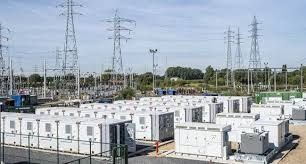BESS Green Energy, A New Frontier in Real Estate
- Clement Hsiao

- Oct 18, 2024
- 2 min read

Battery energy storage systems (BESS) have emerged as a transformative technology in the energy sector, enabling the integration of renewable energy sources and improving grid reliability. However, what is less often recognized is that BESS is also redefining the real estate business, creating new opportunities for investors and developers alike.
The Convergence of Energy and Real Estate
Traditionally, real estate has focused on the development, leasing, and sale of physical spaces—residential, commercial, or industrial. But as energy needs and sustainability goals reshape infrastructure priorities, the land required for BESS projects has become a valuable asset. BESS facilities, which store electricity for later use, are typically sited in strategic locations such as near renewable energy installations, urban load centers, or along major grid transmission lines. This makes real estate a critical component of their success.
Location as a Key Factor
The value of real estate in a BESS project lies in its location. Sites near solar farms, wind farms, or high-demand urban areas are in increasing demand. For example:
1. Urban Edge Properties: In metropolitan areas, BESS systems can be integrated into mixed-use developments or standalone facilities. These urban battery sites help meet local energy demand during peak hours and mitigate grid congestion.
2. Renewable Energy Hubs: Land close to renewable energy generation facilities is essential for co-locating BESS. These projects minimize energy transmission losses and maximize profitability by storing and dispatching energy when prices are high.
3. Decommissioned Sites: Brownfields, former industrial sites, and underutilized properties are being repurposed for BESS projects. This not only adds value to previously neglected real estate but also supports community revitalization efforts.
Real Estate Revenue Models in BESS
The incorporation of BESS into real estate portfolios is generating unique revenue streams, including:
1. Lease Agreements: Landowners can lease their properties to BESS developers in exchange for steady, long-term income.
2. Co-Ownership Models: Some developers offer landowners equity in the energy project, enabling them to share in the revenue generated from energy arbitrage and grid services.
3. Integrated Developments: In urban settings, BESS can be integrated into commercial buildings, enabling property owners to save on energy costs, earn from grid services, and attract sustainability-focused tenants.
4. Increased Property Value: Properties with on-site energy storage systems may experience increased market value due to their energy resilience and sustainability features.
Challenges and Considerations
While the synergy between BESS and real estate is promising, challenges remain. Zoning regulations, community concerns, and environmental impact assessments can complicate site selection and development. Additionally, the high upfront costs of BESS installations necessitate innovative financing models and partnerships.
The Future of BESS in Real Estate
As the global push toward clean energy accelerates, the demand for battery storage solutions will grow. This evolution presents a unique opportunity for real estate investors and developers to diversify their portfolios and capitalize on the energy transition. By viewing BESS as both an energy and real estate asset, stakeholders can unlock new avenues for profit while supporting sustainability goals.
In many ways, battery energy storage is not just an energy infrastructure; it’s a reimagining of how we use and value real estate. The integration of energy storage systems into real estate marks a shift towards a future where energy and land are inextricably linked, driving innovation, resilience, and profitability in both sectors.







Comments